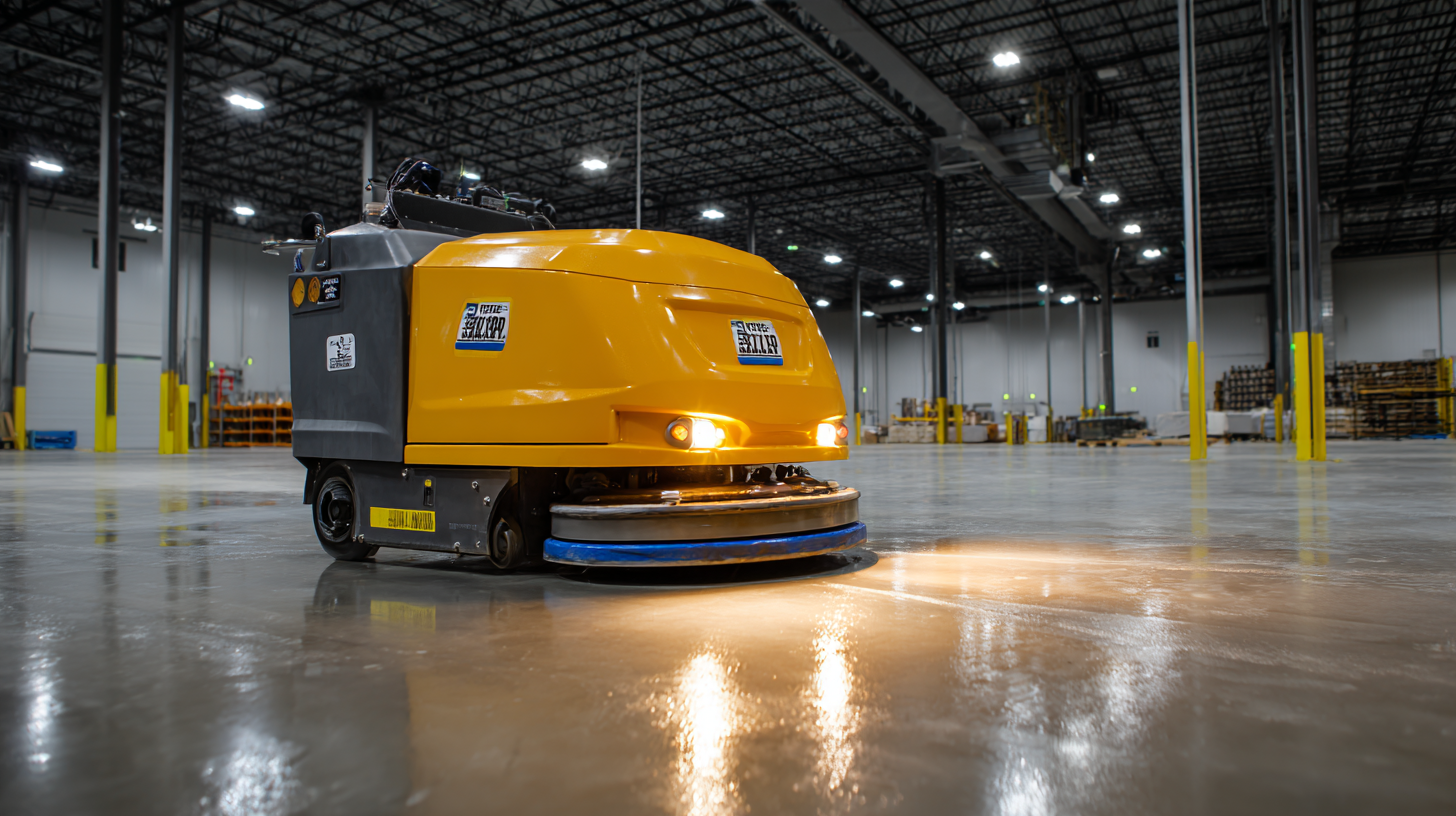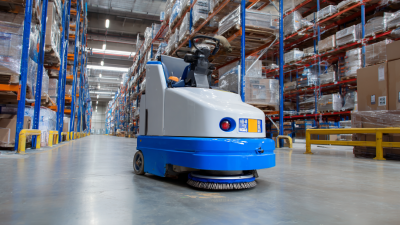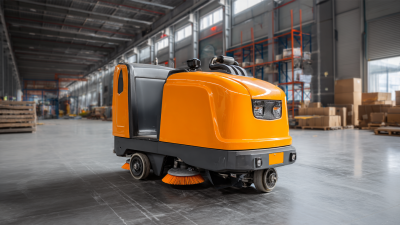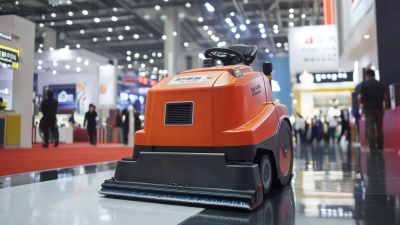Inquiry
Form loading...
In the fast-paced world of warehousing and logistics, maintaining a clean and efficient workspace is essential for maximizing productivity and safety. A crucial component of this cleanliness is the use of a Warehouse Floor Scrubber, a powerful tool designed to keep large floor areas free from dust, dirt, and debris.

Selecting the right scrubber can significantly impact operational efficiency, reduce labor costs, and enhance the overall working environment. This guide aims to provide you with vital insights and key considerations when choosing a Warehouse Floor Scrubber, ensuring that your business not only meets cleanliness standards but also operates at peak performance.
By understanding the various options available and aligning them with your specific needs, you can make an informed decision that supports the growth and success of your warehouse operations.
Understanding the unique needs of your business is crucial for effective warehouse floor maintenance. A clean and well-maintained floor not only enhances the overall appearance of your facility but also plays a significant role in ensuring safety and productivity. Regular maintenance can reduce accidents related to slips and falls while minimizing equipment wear and tear, leading to a longer lifespan for your machinery and a safer working environment for your employees.
To determine the best approach for floor maintenance, it’s essential to assess factors such as the type of flooring, the volume of foot and vehicle traffic, and the nature of the materials handled in your warehouse. Identifying these elements allows you to select the right equipment—whether it's a manual scrubber for smaller areas or a ride-on model for expansive spaces. Additionally, understanding your cleaning frequency and the levels of cleanliness required will guide your investment in a quality floor scrubber that meets the demands of your operation efficiently, ultimately maximizing productivity while reducing long-term costs.
 When selecting the right warehouse floor scrubber for your business, it's critical to evaluate the advantages of automatic versus manual models. Recent industry reports highlight that automatic floor scrubbers can increase cleaning efficiency by up to 30%, which is significant for businesses aiming to maximize productivity. These machines not only reduce the time spent on cleaning tasks but also minimize labor costs, allowing employees to focus on core operations.
When selecting the right warehouse floor scrubber for your business, it's critical to evaluate the advantages of automatic versus manual models. Recent industry reports highlight that automatic floor scrubbers can increase cleaning efficiency by up to 30%, which is significant for businesses aiming to maximize productivity. These machines not only reduce the time spent on cleaning tasks but also minimize labor costs, allowing employees to focus on core operations.
On the other hand, manual scrubbers offer a different set of advantages. They tend to have a lower initial cost and require less maintenance than their automatic counterparts. Notably, when dealing with tight spaces or intricate layouts, manual models can be more effective due to their maneuverability. A comparative analysis indicates that for smaller facilities or specific cleaning scenarios, manual scrubbers can deliver substantial performance while maintaining cost-effectiveness. Understanding these differences and evaluating your specific requirements will ultimately lead to a more informed decision that aligns with your business goals.
When considering warehouse floor scrubbers, the financial impact of choosing the right equipment is often measured against its efficiency. A recent report from the Cleaning Industry Research Institute indicates that up to 80% of operational costs in warehouse management stem from maintenance and cleanliness of the facility. Investing in high-efficiency floor scrubbers may initially seem expensive, but their ability to reduce labor hours and maintenance requirements can lead to substantial long-term savings. For instance, electric scrubbers can save businesses as much as $1,500 per month in labor costs due to their automated features, which allow workers to focus on other productive tasks.
Additionally, the efficiency of different models is quantified through metrics like the cleaning area per hour and water usage rate. According to a 2022 industry analysis by the International Sanitary Supply Association, top-performing scrubbers can cover over 30,000 square feet per hour while using 30% less water compared to standard models. This efficiency not only reduces operational costs but also minimizes environmental impact, aligning with sustainability goals that many businesses strive for today. Properly evaluating the cost versus efficiency of warehouse floor scrubbers can lead to smarter investments that enhance both productivity and fiscal responsibility.
When choosing the right warehouse floor scrubber for your business, focusing on key features such as scrubber size, battery life, and cleaning technology options is crucial for maximizing efficiency. The size of the scrubber directly impacts maneuverability and storage. For larger warehouses, a compact scrubber may struggle to cover expansive areas quickly, while a larger model might be cumbersome in tight spaces. Consider the layout of your warehouse to select a scrubber size that optimizes cleaning time without sacrificing accessibility.
Battery life is another vital consideration. A scrubber with extended battery life allows for longer cleaning sessions without the need for frequent recharging, boosting productivity. Look for models equipped with fast-charging capabilities, enabling quick turnaround times during busy operations. Regular maintenance of battery systems can also enhance longevity and performance, ensuring you get the most out of your investment.
When it comes to cleaning technology, options range from traditional disc scrubbers to advanced orbital models. Each technology offers unique benefits, such as improved cleaning efficiency or reduced water usage. Assess the specific cleaning needs of your warehouse, including the types of surfaces and stains you encounter regularly. By aligning the scrubber’s technology with your requirements, you can achieve optimal results and maintain a clean workspace.
**Tips:** Always test different models in your actual workspace to find the best fit, and consider consulting with cleaning equipment specialists who can provide insights tailored to your warehouse environment.
| Scrubber Size | Battery Life (Hours) | Cleaning Technology | Recommended Floor Area (sq. ft.) |
|---|---|---|---|
| Compact | 4 | Disc | 1,500 |
| Mid-size | 6 | Cylindrical | 3,000 |
| Large | 8 | Hybrid | 5,000 |
| Walk-Behind | 5 | Orbital | 2,000 |
| Riding | 10 | Scrubber-Dryer | 10,000 |
 Maintaining your warehouse scrubber is crucial for ensuring its longevity and optimizing its performance. Regular maintenance checks can prevent small issues from becoming significant problems. Start by routinely inspecting essential components such as brushes, squeegees, and filters. Cleaning the brushes after each use is vital, as debris can accumulate and hinder effectiveness. Additionally, ensure the solution tank and recovery tank are emptied and cleaned regularly to avoid buildup and potential odors that can affect the working environment.
Maintaining your warehouse scrubber is crucial for ensuring its longevity and optimizing its performance. Regular maintenance checks can prevent small issues from becoming significant problems. Start by routinely inspecting essential components such as brushes, squeegees, and filters. Cleaning the brushes after each use is vital, as debris can accumulate and hinder effectiveness. Additionally, ensure the solution tank and recovery tank are emptied and cleaned regularly to avoid buildup and potential odors that can affect the working environment.
Equally important is monitoring the scrubber's functionality and performance. Operators should be trained to recognize any changes in the equipment’s operation, such as unusual noises or decreased cleaning capability. Keeping a maintenance log can help track usage patterns and identify when specific parts may need attention or replacement. Scheduling professional servicing at regular intervals can also extend the life of the scrubber, ensuring it remains a reliable asset in your warehouse cleaning regimen. By prioritizing these best practices, businesses can improve their operational efficiency and reduce long-term costs associated with equipment failure.






